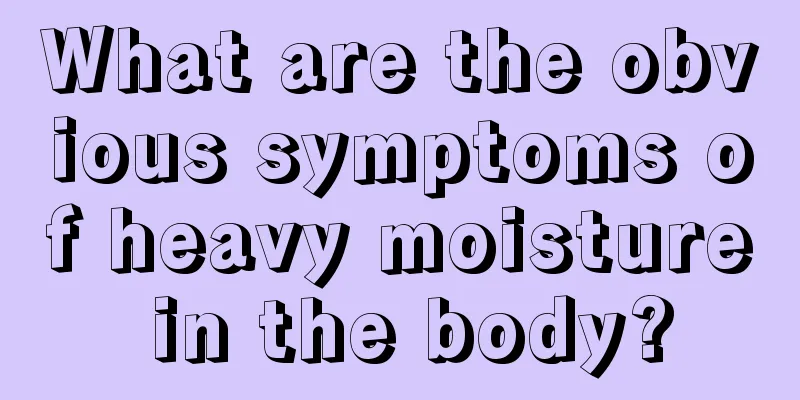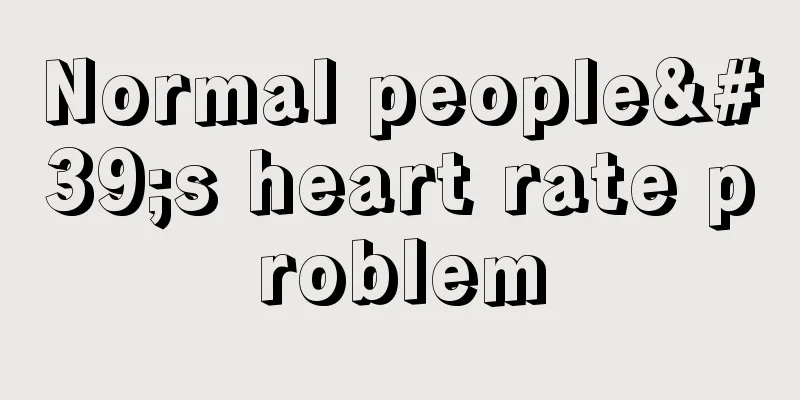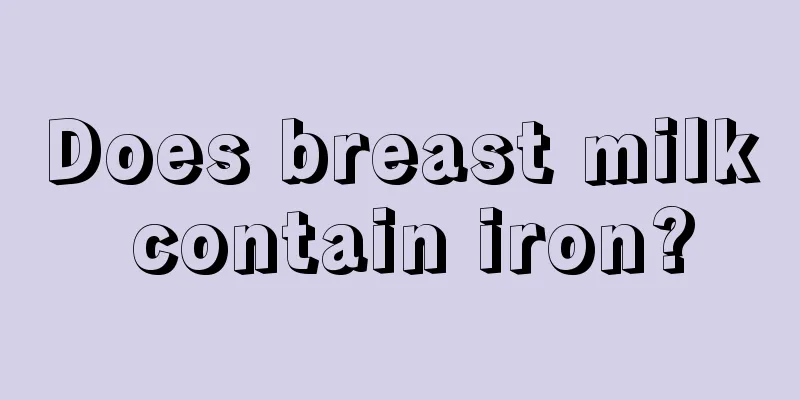Why does my chest hurt when I stick my chest out?

|
For friends who feel chest pain when they straighten their chest, they really want to know the reason. So what is the cause of chest pain when they straighten their chest? Next, this article will introduce to you the relevant content about why you feel chest pain when you straighten your chest, for your reference only. If you want to know why your chest hurts when you straighten your chest, please continue reading! Please see the detailed introduction below. Why does chest pain occur when I straighten my chest? Chest pain when you straighten your chest may be caused by pleurisy. Pleurisy refers to inflammation of the pleura caused by pathogenic factors (usually viruses or bacteria) irritating the pleura, also known as "pleurisy". There may be fluid accumulation in the chest cavity (exudative pleurisy) or no fluid accumulation (dry pleurisy). After the inflammation is controlled, the pleura may return to normal, or the two layers of pleura may adhere to each other. The main clinical manifestations are chest pain, cough, chest tightness, shortness of breath, and even difficulty breathing. Pleurisy can be caused by the following diseases: pneumonia, pulmonary infarction caused by pulmonary embolism, cancer, tuberculosis, rheumatoid arthritis, systemic lupus erythematosus, parasitic infection (such as amebiasis), pancreatitis, injury (such as rib fracture), irritants reaching the pleura from the airways or other parts (such as asbestos), drug allergic reaction (such as hydralazine, procainamide, isoniazid, phenytoin, chlorpromazine), etc. The main clinical manifestations of pleurisy are chest pain, cough, chest tightness, shortness of breath, and even difficulty breathing. When infectious pleurisy or pleural effusion is secondary to infection, there may be chills and fever. Mild cases may be asymptomatic. Pleurisy caused by different etiologies may be accompanied by clinical manifestations of the corresponding diseases. Chest pain is the most common symptom of pleurisy. It often occurs suddenly and varies greatly in severity, ranging from vague discomfort to severe tingling, or it may only occur when the patient takes a deep breath or coughs, or it may persist and be aggravated by deep breathing or coughing. Chest pain is caused by inflammation of the parietal pleura and occurs in the chest wall opposite the site of inflammation. It may also present as referred pain in the abdomen, neck, or shoulders. Deep breathing can be painful and cause rapid and shallow breathing, and muscle movement on the affected side is weaker than on the other side. If a large amount of accumulation occurs, the two layers of pleura may separate from each other, and the chest pain may disappear. A large amount of pleural effusion can cause unilateral or bilateral lung movement limitation during breathing, resulting in dyspnea. Physical examination may reveal a pleural friction sound. Treatment of pleurisy is as follows: 1. Antibiotics: Anti-tuberculosis drugs are suitable for the treatment of tuberculous (dry or exudative) pleurisy. Isoniazid, rifampicin, ethambutol, and streptomycin are used alternately, with a total course of treatment of 6 to 9 months. Non-tuberculous pleurisy should be treated with appropriate drugs based on the primary disease (such as infection, tumor, etc.). Patients with purulent pleurisy or tuberculous empyema with infection are treated with penicillin. 2. Relieve pain: Take aspirin, indomethacin, or codeine orally. 3. Thoracentesis and fluid extraction: It is suitable for patients with exudative pleurisy with large amount of pleural effusion, obvious breathing difficulties or long-term treatment of effusion that is not absorbed. The amount of fluid drawn each time should not exceed 1000 ml, 2 to 3 times a week. 4. Hormone therapy: used in combination with anti-tuberculosis drugs, it has a positive therapeutic effect on eliminating systemic toxic symptoms, promoting absorption of effusion, and preventing pleural thickening and adhesion. Prednisone can be taken orally. When systemic symptoms improve and the effusion is significantly absorbed, the dosage can be gradually reduced and the medication should be used for 4 to 6 weeks. The above is the relevant introduction about why chest pain occurs when you straighten your chest. I believe that after reading the above introduction, you already know why you feel chest pain when you straighten your chest. In fact, chest pain when you straighten your chest may be caused by pleurisy. Therefore, it is best to go to the hospital for a check-up, so that you can feel more at ease. If it is confirmed to be caused by pleurisy, timely treatment is required. |
<<: Why does my chest hurt when I smoke too much?
>>: Why does my chest hurt when I exhale
Recommend
How to treat and care for lumbar fractures?
The lumbar vertebra has the function of protectin...
Will pregnancy cause hair loss?
Women will experience many symptoms and manifesta...
What to eat if you have cervical cancer
Early cervical cancer has little effect on digest...
What to do when you feel inexplicably nervous and anxious
Inexplicable tension and anxiety is a situation t...
How is the effect of TCM on melanoma
The incidence of melanoma is still very high. The...
What is the cause of abdominal bleeding
Intraperitoneal bleeding is a common clinical pro...
My throat itches in the middle of the night
Good sleep is very important for us, because one-...
What are some tips for removing oil stains?
Removing oil stains is the key consideration when ...
What medicine is effective for eye mucus
Eye mucus is a normal physiological phenomenon th...
Is it good to take a bath with sulfur soap frequently?
If you often choose to use sulfur soap to take a ...
Can pigeon pea leaves cure femoral head necrosis?
Pigeon pea leaves are leaves of a leguminous plan...
Several common treatments for skin cancer
What are the common treatments for skin cancer? I...
Only with esophageal cancer examination can patients control the disease earlier
As a more serious tumor disease, esophageal cance...
Can lecithin relieve hair loss?
Many people suffer from the problem of hair loss,...
What fruits are beneficial for patients with bone cancer?
What fruits are good for patients with bone cance...









